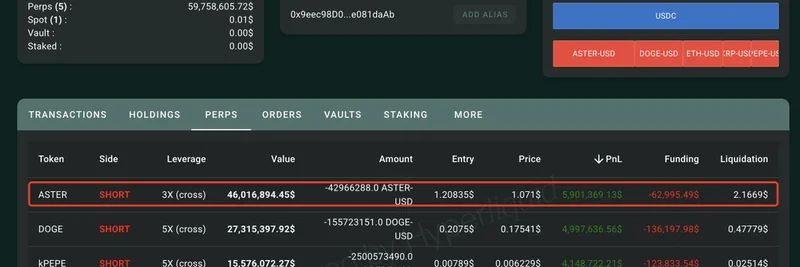TL;DR
- LMRAI (often also referred to as LMR) is the utility token of Lumerin, an Ethereum-based protocol for programmable, peer‑to‑peer data stream routing.
- Real uses include decentralized AI data routing, a P2P Bitcoin hashpower marketplace, and integrations with DePIN and tokenized RWAs.
- Token utilities: marketplace currency, protocol gas (planned), staking, governance, and ecosystem incentives.
- Total supply is 1,000,000,000; distribution prioritizes treasury, community, and mineable emissions over 10 years.
- It trades primarily on Ethereum DEXs; you can track and trade it on Uniswap and on gmgn.ai for a fast, meme‑token‑focused experience.
- Despite occasional confusion, LMRAI is not a BNB Chain token; it’s an ERC‑20 on Ethereum.
Quick facts
- Name / Symbol: Lumerin AI (LMRAI / LMR)
- Contract: 0x72eb1e391358f42f6c16b847141e9f84b76c0777 (Etherscan)
- Chain: Ethereum (ERC‑20), Decimals: 9
- Total supply: 1,000,000,000
- Circulating supply: ~606,000,000 (as of April 2024)
- Pricing snapshot (Aug 2025): reports range roughly $0.0012–$0.0036, reflecting data source differences and volatility; LMRAI/WETH liquidity around ~$302k on Ethereum per DEX data
What is Lumerin?
Lumerin is a base-layer protocol for routing, accessing, and transacting data streams peer‑to‑peer via smart contracts. Think of it as programmable pipes for any data flow—AI inference, hashpower, real‑world asset data—owned and controlled by users, not centralized middlemen.
Core idea in simple terms:
- Programmable routing: Smart contracts define “who can access what data, when, and for how long.”
- Pay‑as‑you‑go: Usage can be metered and paid in crypto.
- P2P by design: Users exchange resources directly, improving efficiency and censorship resistance.
Official resources:
- Website: Lumerin.io
- Docs: docs.lumerin.io
- GitHub: github.com/Lumerin-Protocol
- Twitter/X: @LumerinProtocol
- Telegram: t.me/LumerinProtocol
Key initiatives and use cases
- Decentralized AI data routing: Permissionless access to public/private AI models; censorship‑resistant inference; crypto‑native payments; an accessible AI marketplace.
- Morpheus AI network: Lumerin is building core node software for Morpheus, connecting users, compute providers, and smart agents in Web3.
- Hashpower marketplace (first flagship use case): A P2P marketplace (on Arbitrum) for buying/selling Bitcoin hashpower via smart contracts, improving price discovery and access for miners and buyers.
- DePIN: Real‑time, programmatic allocation of physical resources across decentralized infrastructure networks.
- Tokenized RWAs: Streamlined data routing and transactions for RWA flows, with fewer intermediaries and better liquidity.
- Other data stream control: Private, encrypted video/audio, permissioned comms, and programmable data/NFT streams.
LMRAI (LMR) token utility
- Marketplace currency: Pay for and settle hashpower contracts and other stream services.
- Protocol gas (planned): LMRAI will be used to pay network gas/fees within the Lumerin protocol.
- Staking: Stake to earn rewards and help secure network operations.
- Governance: Participate in protocol decisions and parameter updates.
- Incentives: Reward contributors, open‑source builders, and community growth.
Tokenomics
- Max supply: 1,000,000,000 LMRAI (LMR)
- Circulating: ~606,000,000 (April 2024)
- Distribution:
- Treasury: 25% (250,000,000)
- Community: 22.6% (226,021,102), including reallocated unsold public sale tokens
- Mineable: 25% (250,000,000) over 10 years
- Seed: 15% (150,000,000)
- Private sale: 8% (80,000,000)
- Public sale: 4.3% (43,378,898)
- Strategic: 0.1% (600,000)
- Core team: Subject to 6‑month lock and ~2‑year vesting
Why this matters: A large community and mineable allocation support long‑term network participation, while treasury and vesting aim to balance development runway with supply discipline.
Market snapshot and audits
- Price: Various aggregators reported ~$0.0012–$0.0036 in Aug 2025; expect volatility and source discrepancies.
- Liquidity: Around ~$302k on the LMRAI/WETH pair on Ethereum per DEX data around Aug 11, 2025.
- Audits: Mentions of audits exist on some platforms, but public audit details were not consistently verifiable. Treat any “audit” claims for newly created or migrated contracts with caution and verify directly via official channels.
Where to track and trade LMRAI
- Uniswap (Ethereum): Popular for ERC‑20 liquidity and price discovery (uniswap.org)
- gmgn.ai token page: Track, analyze, and trade LMRAI with meme‑token‑focused tools and smart‑money signals: https://gmgn.ai/eth/token/fV1R5sZ5_0x72eb1e391358f42f6c16b847141e9f84b76c0777
Tip: Always confirm the contract address (0x72eB…0777) on Etherscan before swapping.
For builders: how Lumerin fits AI and DePIN
- Smart‑contract‑defined access: Build apps where users rent model inference time, GPU cycles, or bandwidth without trusting a centralized broker.
- Stream metering and payments: Charge per token, per minute, or per job, settled on‑chain with LMRAI.
- Composability: Combine AI agents, DePIN resources, and RWA data flows in programmable pipelines.
- Start here: Docs and GitHub
Common questions
- Is LMRAI on BNB Chain?
- No. LMRAI is an ERC‑20 on Ethereum at 0x72eb1e391358f42f6c16b847141e9f84b76c0777. If you see claims about BNB Chain, double‑check on BscScan—this contract is not listed there.
- Why do price feeds differ?
- DEX data can vary across aggregators due to update intervals, pool selection, and outlier trades. Cross‑reference multiple sources and check the live pool before executing trades.
- What’s with LMRAI vs. LMR?
- In Lumerin materials, LMRAI is commonly referred to as LMR. Always verify via the contract address to avoid ticker confusion.
Risks and considerations
- Liquidity and volatility: Small/mid liquidity pools can produce sharp price moves and slippage.
- Audit clarity: Public audit artifacts were not consistently available; review contract code and risks yourself.
- Early‑stage dynamics: Feature rollouts (e.g., protocol gas, broader AI marketplace) can shift timelines and token flows.
- Ticker confusion: Similar tickers across chains or projects can cause misbuys—use the verified address.
Official links
- Website: https://lumerin.io/
- Whitepaper/Docs: https://docs.lumerin.io/
- GitHub: https://github.com/Lumerin-Protocol
- Etherscan: https://etherscan.io/token/0x72eb1e391358f42f6c16b847141e9f84b76c0777
- Twitter/X: https://twitter.com/LumerinProtocol
- Telegram: https://t.me/LumerinProtocol
Not financial advice. Always do your own research and use reputable tools and explorers before transacting.



